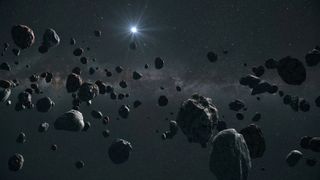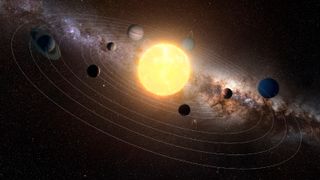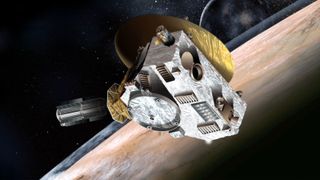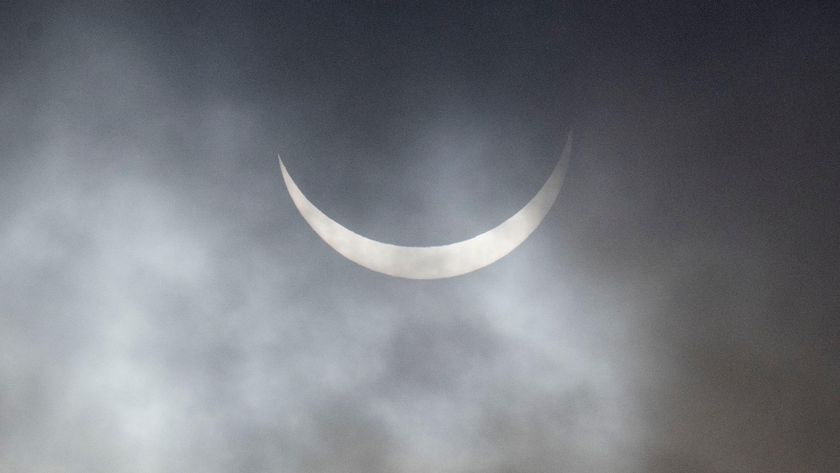Potential discovery of a dozen objects beyond Pluto could reveal a new section of the solar system we never knew about
Astronomers may have detected a dozen large objects lurking beyond the Kuiper Belt at the edge of our solar system, suggesting there could be another equally massive, "second Kuiper Belt" hiding beyond the orbit of Pluto.

Researchers may have detected a dozen new, large objects beyond the Kuiper Belt, which suggests that there is lots more stuff in the solar system than we realized. It could even hint that there is a "second Kuiper Belt" further out toward the edge of our stellar neighborhood, Science.org reported.
The sun's influence reaches much further out into space than the eight planets that orbit around it. Beyond Neptune, the solar system stretches out to around 100 astronomical units (AU), which is 100 times the distance between Earth and the sun. For context, the most distant planet from the sun, Neptune, is roughly 30 AU from our home star.
Beyond the edge of the solar system, or heliopause, lies the Oort Cloud — a reservoir of comets and asteroids that are loosely contained by the sun's gravity — that stretches to at least 1,000 AU from the sun, and likely even further.
But a majority of the largest known asteroids, comets and other large objects that lie beyond Neptune's orbit are contained within the Kuiper Belt, which stretches between 30 and 50 AU from the sun. Famous residents of the Kuiper Belt include the dwarf planet Pluto and the double-lobed object Arrokoth — the most distant object visited by a spacecraft. Planet Nine, if it exists, would also lurk somewhere within the Kuiper Belt. Until now, very few massive objects in the solar system have been found beyond the Kuiper Belt.
Related: What does the edge of the solar system look like?

Researchers discovered the 12 potential massive objects around 60 AU from the sun while searching for potential new targets for NASA's New Horizons spacecraft — the probe that studied Pluto and Arrokoth up close, which is now around 57 AU from the sun as it continues to head toward the heliopause. The team used artificial intelligence to rapidly sift through what would otherwise have been weeks worth of data captured by the Subaru Telescope on Hawaii's Mauna Kea volcano.
The researchers presented their findings at the 54th Lunar and Planetary Science Conference, which was held in Houston, Texas in mid-March. (The findings have not yet been peer-reviewed or accepted for publication.)
Sign up for the Live Science daily newsletter now
Get the world’s most fascinating discoveries delivered straight to your inbox.
The team is not surprised by their findings. Compared to other observed star systems, the solar system is "bloody small," study lead author Wesley Fraser, an astrophysicist with the National Research Council Canada, told Science. The newly detected objects suggest that the solar system is much more massive, which would fit better with what astronomers know about other star systems, he added.
The findings could also support data collected by New Horizons, which has continually been bombarded by dust as it ventures deeper into space, study co-author Alan Stern, the principal investigator of the New Horizons mission, told Science. "And the simplest explanation for that is that there is more stuff out there that we haven't detected," he added.

The 10 AU distance between the Kuiper Belt and the newly observed objects also suggests that they are being pulled away from the belt by something more massive, which could be another more distant Kuiper Belt full of unknown objects, the researchers said.
Related: What's the maximum number of planets that could orbit the sun?
But not everyone is convinced by the new findings.
In June, a similar survey using the Víctor M. Blanco Telescope in Chile observed a different patch of sky, but only turned up one object beyond 50 AU.
"If there really is a new belt, that's a super exciting thing," survey lead Pedro Bernardinelli, an astronomer at the University of Washington, told Science. But "why are we not seeing these things?" he asked. It's possible that his team got "unlucky," Bernardinelli added, but the odds are long. (The results of this survey have also not yet been peer-reviewed).
The study researchers are currently sorting through more recent data they have collected since their discovery, which they hope will confirm their findings. But if they come up empty handed there is a chance the New Horizons spacecraft could still find these objects, after its current mission was extended to the end of 2029 last week, Live Science's sister site Space.com reported.

Harry is a U.K.-based senior staff writer at Live Science. He studied marine biology at the University of Exeter before training to become a journalist. He covers a wide range of topics including space exploration, planetary science, space weather, climate change, animal behavior and paleontology. His recent work on the solar maximum won "best space submission" at the 2024 Aerospace Media Awards and was shortlisted in the "top scoop" category at the NCTJ Awards for Excellence in 2023. He also writes Live Science's weekly Earth from space series.










